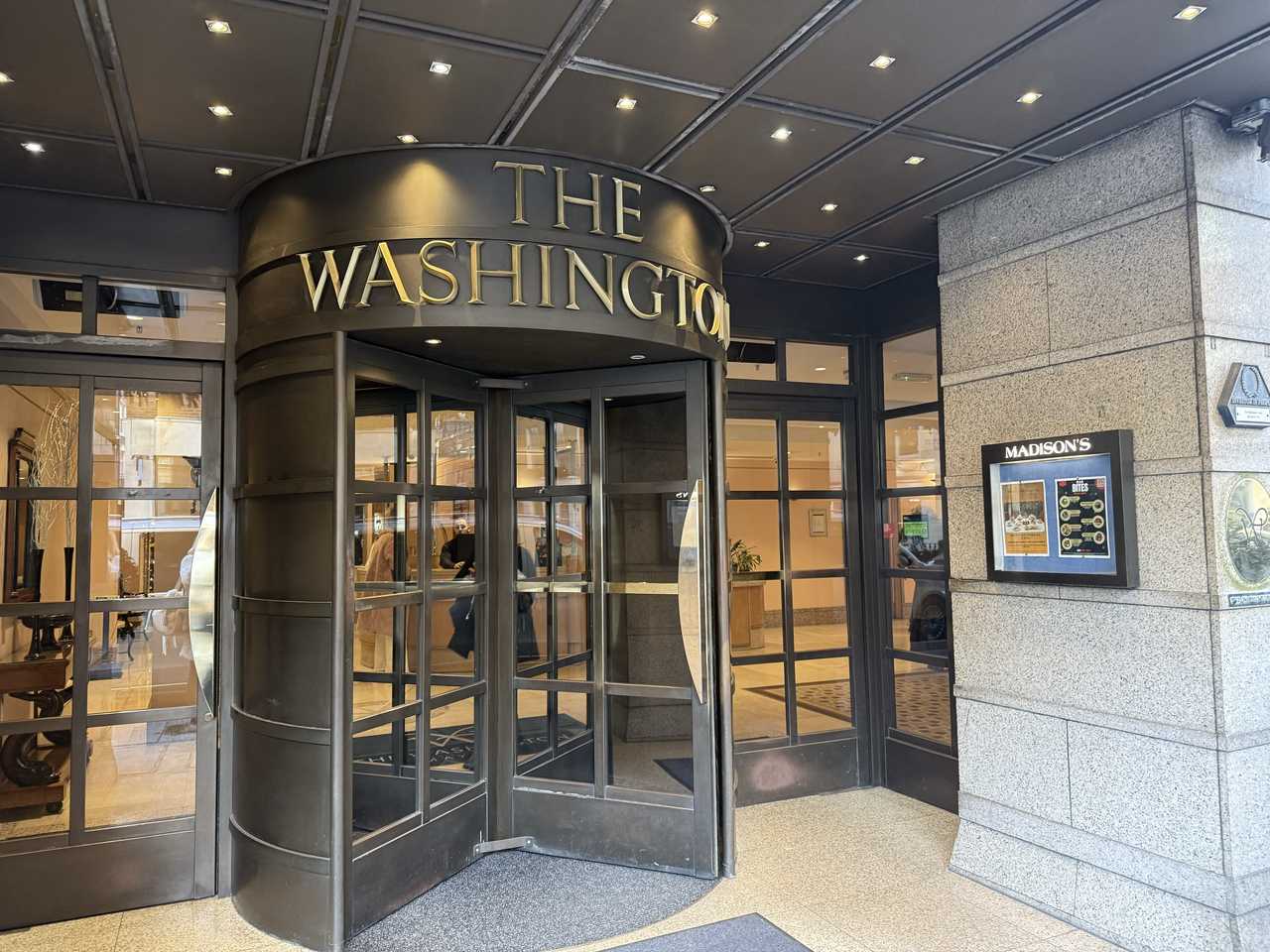The Washington Mayfair hotel has an excellent Mayfair location on Curzon near Oxford Street and Berkeley Square. And it’s easy to get to, just around the corner from Green Park station and Hyde Park.
Once a boarding house, it was transformed into a hotel some 100 years ago. Decor is decidedly Art Deco style from its revolving entrance doors that deposit you by the concierge and near the reception desk to its seating and artworks.

The Washington Hotel, Mayfair
It’s bright and spacious with some pretty pieces of art, and a row of plump, vibrant red sofas in the lobby makes for an eye-catching scene.

Washington Mayfair Lobby
Who for
Anyone looking for a value for money London base for a short city break, either for leisure or bleisure.
Accommodation
The Washing Mayair has 178 rooms, including 18 suites and a two-bedroom Penthouse Suite. I enjoyed a deluxe suite on the 7th floor. It had a narrow balcony, but it was too chilly that night to enjoy it.

Washington Mayfair Delux double
Rooms are spacious, clean, with a desk, a very comfy bed, a flat screen tv and complimentary bottled water. The ensuire comprises a decent-sized bath and a powerful shower. The toiletries are supplied by Crabtree & Evelyn products.
If I am being picky, the room could do with a spruce up, but otherwise had everything I needed for a good night’s sleep and a good cuppa the next morning.
Food & Drink

Madison Restaurant
Madison’s bar has spaced-out seating that leads to an equally spacious restaurant area. The menu comprises contemporary, easy-to-eat dishes, and for a more glamorous evening, the local area offers plenty of gastronomic choices too.
Breakfast is a buffet-style full English breakfast – sausages, bacon, scrambled eggs and hash browns. Alternatively there are cereals, pasties and fresh fruit.
An a la carte menu serves cooked dishes too.
Facilities
The hotel’s amenities include a gym, 24-hour room service, and meeting rooms.
How Much
Rooms are available from £235.00. CHECK AVAILABILITY.
What’s Nearby
The Washington Mayfair has a central location close to the shopping of Oxford Street, Piccadilly Circus is a 10-minute walk, and Buckingham Palace is nearby. It is ideal for Hyde Park, especially in the summer when the park hosts its famous concerts. The nearest tube is Green Park Station.
Verdict: The Washington Mayfair has a central location in Mayfair on the corner of Curzon Street. Service is with a smile, facilities are ample and at room rates starting at £235 offers value in such a prime setting.
The post The Washington Mayfair hotel review, London appeared first on The Travel Magazine.






















